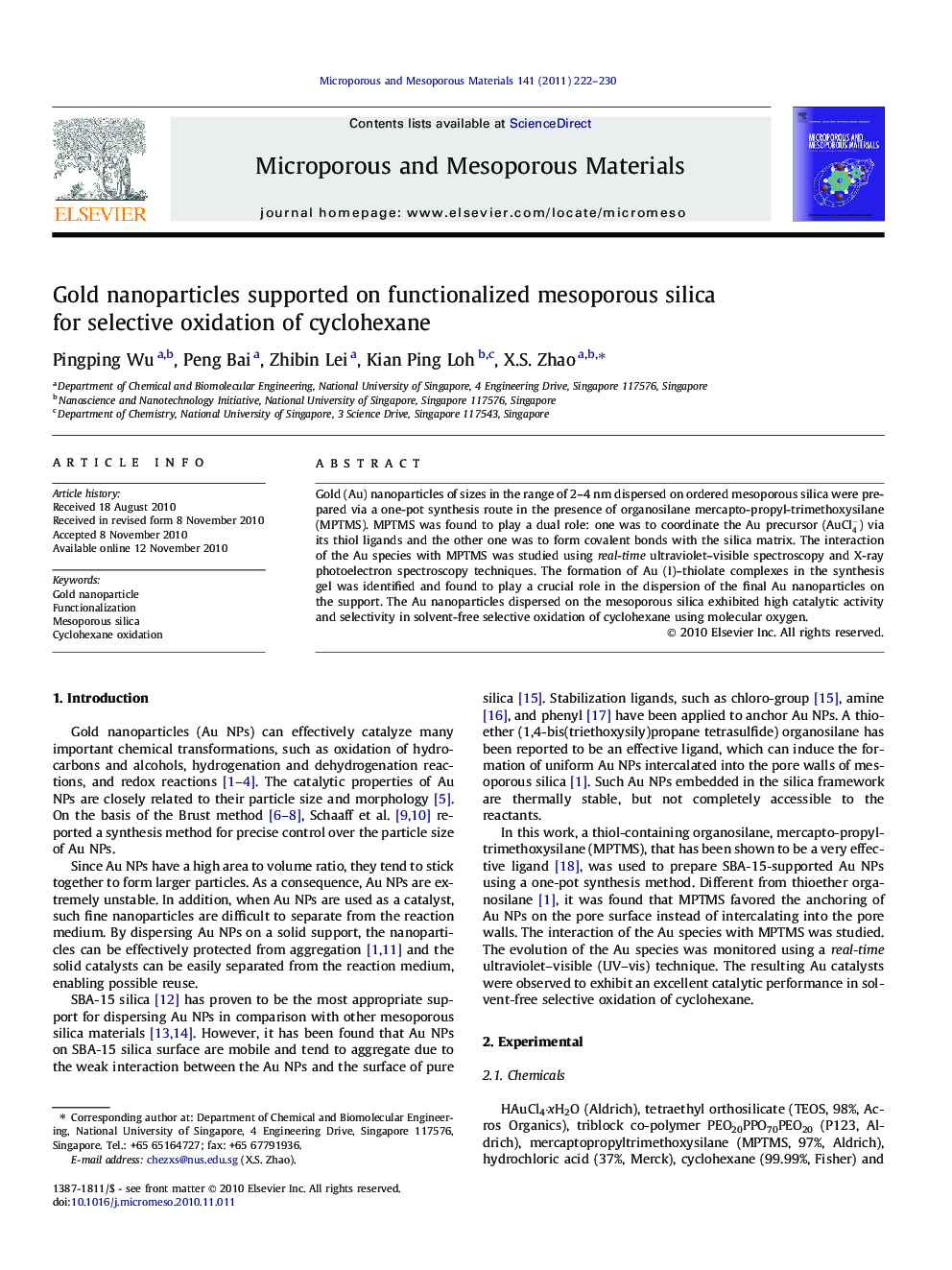| Article ID | Journal | Published Year | Pages | File Type |
|---|---|---|---|---|
| 75444 | Microporous and Mesoporous Materials | 2011 | 9 Pages |
Gold (Au) nanoparticles of sizes in the range of 2–4 nm dispersed on ordered mesoporous silica were prepared via a one-pot synthesis route in the presence of organosilane mercapto-propyl-trimethoxysilane (MPTMS). MPTMS was found to play a dual role: one was to coordinate the Au precursor (AuCl4-) via its thiol ligands and the other one was to form covalent bonds with the silica matrix. The interaction of the Au species with MPTMS was studied using real-time ultraviolet–visible spectroscopy and X-ray photoelectron spectroscopy techniques. The formation of Au (I)–thiolate complexes in the synthesis gel was identified and found to play a crucial role in the dispersion of the final Au nanoparticles on the support. The Au nanoparticles dispersed on the mesoporous silica exhibited high catalytic activity and selectivity in solvent-free selective oxidation of cyclohexane using molecular oxygen.
Graphical abstractFine gold nanoparticles (2–4 nm) were homogeneously immobilized in mesoporous silica via a one-pot synthesis route in the presence of organosilane as a functional agent. The formation mechanism was characterized by using real-time ultraviolet–visible spectroscopy and X-ray photoelectron spectroscopy techniques. The gold nanoparticles exhibited a very high activity and selectivity in the solvent-free selective oxidation of cyclohexane using molecular oxygen.Figure optionsDownload full-size imageDownload as PowerPoint slideResearch highlights► Mercapto-propyl-trimethoxysilane (MPTMS) was found to play a dual role in the immobilization of gold nanoparticles in mesoporous silica. ► The amount of MPTMS was observed to determine both the quality of the mesostructure and gold loading. ► The formation of Au (I)–thiolate complexes led to a high dispersion of gold.
